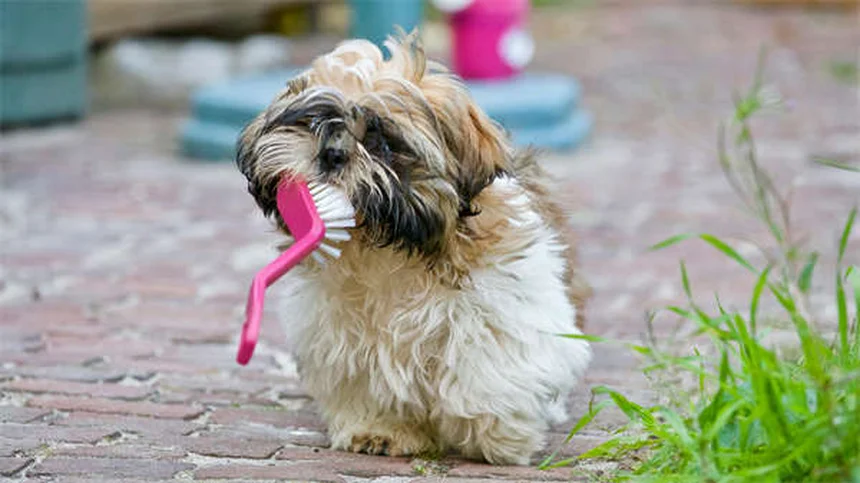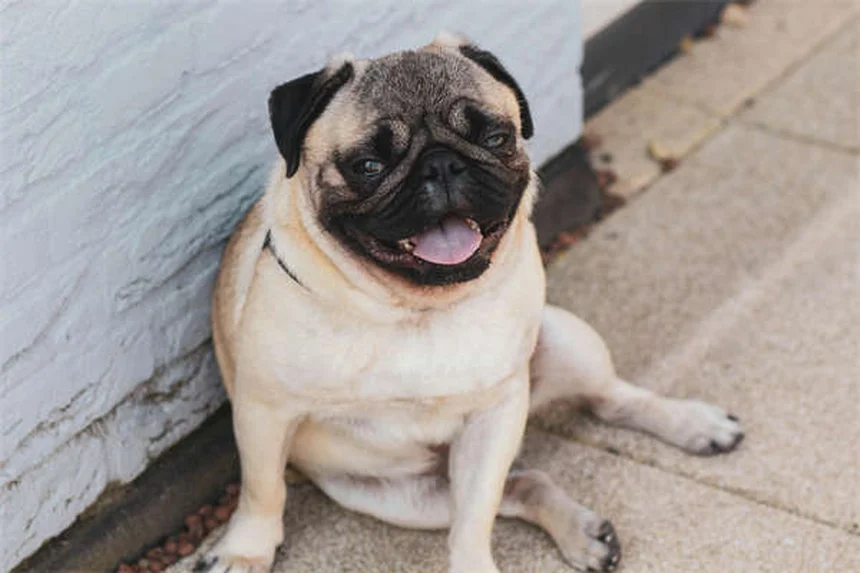Advertisement
Why do cats knead? The answer is simple: It's one of the most natural and instinctive behaviors in felines! From the moment they're born, kittens knead their mother's belly to stimulate milk flow. Many cats continue this comforting motion throughout their lives because it releases feel-good hormones and helps them mark their territory. I've been studying cat behavior for years, and let me tell you - there's more to this making biscuits action than meets the eye! Whether your cat is kneading your lap, blankets, or furniture, they're expressing everything from deep relaxation to claiming ownership. Stick with me as we explore the fascinating science behind why cats knead and what it really means when your furry friend gets those paws working.
E.g. :Fading Kitten Syndrome: 5 Critical Signs Every Cat Owner Must Know
- 1、The Fascinating World of Cat Kneading
- 2、Why Cats Knead Different Things
- 3、When Kneading Might Be a Concern
- 4、Managing Your Cat's Kneading
- 5、Fun Kneading Facts
- 6、Living With a Kneading Cat
- 7、The Surprising Benefits of Cat Kneading
- 8、Kneading Through the Ages
- 9、The Art of Kneading
- 10、Kneading in Popular Culture
- 11、Kneading Across Species
- 12、The Future of Kneading Research
- 13、FAQs
The Fascinating World of Cat Kneading
What Exactly Is Cat Kneading?
You've probably seen your cat pushing their paws in and out against soft surfaces - that adorable motion we call "kneading" or "making biscuits." But why do cats do this? Let me break it down for you in simple terms.
Kneading is that rhythmic motion where cats alternate pushing their front paws against soft surfaces. Some cats do this their whole lives, while others stop after kittenhood. Ever wonder why? Well, I've got some interesting theories to share with you!
The Origins of Kneading Behavior
Here's something cool - kneading starts when cats are just tiny kittens. When nursing, kittens knead their mother's belly to stimulate milk flow. This action becomes associated with comfort and security. Many cats continue kneading into adulthood because it reminds them of those cozy, safe feelings from kittenhood.
But it's not just about nostalgia! Wild cats do this too. They'll knead grass or leaves to create a comfy sleeping spot. Your house cat might be doing the same thing when they knead your favorite blanket - they're just making their bed, wild cat style!
Why Cats Knead Different Things
 Photos provided by pixabay
Photos provided by pixabay
Blankets: The Ultimate Kneading Target
Why do cats love kneading blankets so much? Let me count the ways:
- It's relaxing - like a stress ball for cats!
- They're marking their territory with scent glands in their paws
- They might be pretending to nurse (some even suckle the blanket!)
See this table comparing kneading behaviors:
| Object Kneaded | Likely Reason | Common Additional Behaviors |
|---|---|---|
| Blankets | Comfort, nesting | Suckling, purring |
| Your Lap | Affection, bonding | Purring, head-butting |
| Furniture | Territory marking | Scratching nearby |
Why Your Cat Kneads YOU
When your cat kneads you, it's special! They're not just making biscuits - they're making love biscuits. Here's what it means:
First, they're showing affection. Remember how they kneaded mom as kittens? Now they're doing it to you because you're family. Second, they're marking you with their scent - basically putting their "pawprint" on you to say "this human is mine!"
Ever noticed your cat kneading right before curling up on you? That's them fluffing up their "bed" - in this case, your lap or stomach. How's that for a compliment?
When Kneading Might Be a Concern
Is Too Much Kneading Bad?
Here's something interesting - kneading releases dopamine, that feel-good brain chemical. But did you know excessive kneading could signal stress or discomfort? It's like when we bite our nails when nervous.
If your cat suddenly starts kneading way more than usual, it might be time for a vet visit. They could be trying to soothe sore muscles or relieve anxiety. Better safe than sorry, right?
 Photos provided by pixabay
Photos provided by pixabay
Blankets: The Ultimate Kneading Target
Sometimes there's more to kneading than meets the eye. Cats with arthritis might knead to stretch stiff joints. Others might do it compulsively due to anxiety disorders. The key is watching for changes in your cat's normal behavior patterns.
Here's a pro tip: If kneading seems painful for your cat or they favor one paw, definitely schedule that vet appointment. Early detection makes all the difference!
Managing Your Cat's Kneading
Do's for Happy Kneading
Want to keep both you and your cat happy? Try these tips:
First, set up approved kneading spots with soft blankets or pads. Reward your cat when they use these spots - positive reinforcement works wonders! Second, keep those claws trimmed. It makes kneading much more pleasant for everyone involved.
Did you know there are special pheromone products that can help anxious cats? Things like Feliway® diffusers create a calming environment. Your vet can recommend the best options for your furry friend.
Definite Don'ts
Whatever you do, never punish your cat for kneading. This natural behavior is hardwired into them. Yelling or spraying water will only make them anxious and kneak more when you're not looking!
And please, never consider declawing. That's like amputating your cat's fingertips - incredibly painful and unnecessary. There are much kinder ways to manage kneading.
Fun Kneading Facts
 Photos provided by pixabay
Photos provided by pixabay
Blankets: The Ultimate Kneading Target
Here's a mind-blowing fact: Kneading may date back to wild cat ancestors preparing sleeping areas in tall grass. Your house cat is basically channeling their inner lion when they knead your couch!
Another cool thing? The scent glands in their paws leave behind pheromones. So when your cat kneads your favorite sweater, they're not just being cute - they're making sure everyone knows it's theirs now!
Why Some Cats Knead More Than Others
Ever wonder why some cats are kneading machines while others rarely do it? It often comes down to personality and early experiences. Cats weaned too early might knead more, while confident cats might do it less. There's no "normal" - just what's normal for your cat!
Here's a question for you: Does your cat knead more when you're stressed? Many cats pick up on our emotions and may increase comforting behaviors like kneading when they sense we need it. Pretty amazing, right?
Living With a Kneading Cat
Making It Work for Both of You
If your cat's kneading gets too intense, try placing a thick blanket between you and those enthusiastic paws. This protects your skin while still letting your cat express this natural behavior. Win-win!
For furniture protection, try double-sided tape on favorite kneading spots (cats hate sticky paws) while providing attractive alternatives nearby. Remember - it's about redirecting, not stopping the behavior completely.
When to Seek Help
Still concerned about your cat's kneading? Here's my advice: If it's causing damage, distress, or seems compulsive, talk to your vet. They can rule out medical issues and suggest behavioral solutions. Sometimes simple changes in routine can make a big difference!
At the end of the day, kneading is usually just your cat being a cat. It might be a little inconvenient sometimes, but isn't it worth it for all that furry love?
The Surprising Benefits of Cat Kneading
Kneading as a Form of Feline Therapy
Did you know your cat's kneading might actually be good for your health? That's right - those rhythmic paw movements can have therapeutic effects for both cats and humans. Let me explain how this works.
When cats knead, they often enter a state of deep relaxation, similar to how humans feel during meditation. The repetitive motion releases endorphins in their brains. And here's the kicker - when we pet a kneading cat, our bodies release oxytocin, the "love hormone." It's like getting a free stress-relief session from your furry therapist!
The Social Dynamics of Kneading
Ever noticed how some cats only knead certain family members? There's actually a fascinating social hierarchy at play here. Cats typically reserve kneading for individuals they feel most bonded with - consider it their version of a friendship bracelet.
In multi-cat households, you might observe interesting kneading patterns. The dominant cat often kneads more frequently and in more visible locations. Submissive cats may knead in private or only when the alpha cat isn't around. It's their way of negotiating social relationships without direct confrontation.
Kneading Through the Ages
Historical Perspectives on Feline Kneading
Ancient Egyptians might have been the first to document kneading behavior. Wall paintings in tombs show cats making similar motions near their owners. Some scholars believe Egyptians interpreted kneading as a sacred ritual - after all, they did worship cats as gods!
Fast forward to medieval Europe, where people had some wild theories about kneading. Many thought cats were "kneading out evil spirits" from bedding. This led to the superstition that a kneading cat could protect you from witchcraft. Not exactly scientific, but an interesting cultural interpretation!
Evolutionary Advantages of Kneading
Why did this behavior persist through centuries of feline evolution? Let's look at three key survival benefits:
- Creating safe, comfortable resting places in the wild
- Strengthening paw muscles for climbing and hunting
- Establishing scent markers to navigate territory
Modern house cats may not need these skills for survival, but the instinct remains strong. It's like how we still have an appendix - an evolutionary leftover that doesn't serve its original purpose anymore.
The Art of Kneading
Different Kneading Styles Explained
Just like human handwriting, every cat has a unique kneading signature. Some common styles include:
| Style | Description | Typical Cat Personality |
|---|---|---|
| The Baker | Precise, measured movements | Methodical and calm |
| The Jazz Paws | Fast, erratic kneading | Energetic and playful |
| The Marathoner | Long kneading sessions | Persistent and focused |
Have you identified your cat's kneading style yet? Recognizing these patterns can help you understand their mood and personality better.
When Kneading Becomes Performance Art
Some cats take kneading to Olympic levels! I've seen felines who:
Knead while standing on their hind legs, knead with all four paws simultaneously, or even knead while holding toys in their mouths. These creative variations show just how adaptable this instinctive behavior can be. Your cat might be the next kneading champion - you just don't know it yet!
Kneading in Popular Culture
Famous Kneading Cats in Media
From Garfield to the Cheshire Cat, kneading has made its mark in pop culture. The most iconic example? That scene in Breakfast at Tiffany's where Cat kneads Audrey Hepburn's lap. It wasn't scripted - the cat actor was just being a cat!
Animated films often exaggerate kneading for comic effect. Think of the Aristocats kneading to jazz music. While real cats don't usually move in sync with music, the portrayal captures the joyful essence of kneading perfectly.
Internet's Obsession with Kneading Videos
Why do kneading videos get millions of views? There's actual science behind their viral appeal. The combination of rhythmic motion, cute faces, and soothing purring triggers our brain's "cute response." It's nature's way of making us pay attention to vulnerable creatures.
Some of the most popular kneading ASMR channels have subscribers who use the videos to fall asleep. The next time you can't sleep, try watching kneading videos - it might work better than counting sheep!
Kneading Across Species
Do Other Animals Knead Like Cats?
Here's something that might surprise you - kneading isn't exclusive to cats! Many mammals display similar behaviors for various reasons. For example:
Rabbits perform a motion called "chin rubbing" that serves a similar territorial marking purpose. Dogs sometimes "paw" at their bedding before lying down. Even bears have been observed making kneading-like movements when preparing dens. It seems the need to "fluff" one's bed is nearly universal in the animal kingdom!
What Makes Feline Kneading Unique?
While other animals might show similar behaviors, cat kneading stands out for three special reasons:
First, cats combine the physical motion with scent marking from their paw glands. Second, they often maintain kneading as a social behavior into adulthood, unlike many species that outgrow it. Third, the emotional component - cats clearly derive pleasure from kneading in a way that's rare among animals. That's why we find it so endearing!
The Future of Kneading Research
Cutting-Edge Studies on Feline Behavior
Universities are now using motion-capture technology to study kneading patterns. Early findings suggest there might be a "universal kneading language" that crosses breed lines. How cool is that?
Veterinary researchers are also exploring how kneading relates to feline emotional intelligence. Preliminary results indicate that cats who knead frequently may be more attuned to human emotions. Maybe your kneading cat really is trying to comfort you when you're sad!
Could We Train Cats to Knead on Command?
This might sound like science fiction, but some behaviorists are experimenting with kneading training. Using positive reinforcement, they've had success getting cats to knead specific objects at certain times. Imagine having your cat knead your sore shoulders on demand!
Of course, most cats will knead when and where they please - because that's what makes them cats. And honestly, wouldn't we love them less if they were too predictable?
E.g. :Why Do Cats Knead? | PetMD
FAQs
Q: Is it normal for my cat to knead me all the time?
A: Absolutely! When your cat kneads you, it's actually a huge compliment. I've observed that cats typically knead their favorite humans the most. This behavior stems from kittenhood when they kneaded their mother for milk and comfort. Now they associate that motion with safety and love - and you're the lucky recipient! The pheromones released from their paw pads also mean they're marking you as "theirs." While some cats knead more than others, frequent kneading is completely normal unless it suddenly increases dramatically or seems painful for your cat.
Q: Why does my cat drool when kneading blankets?
A: Oh, the drool! Many cat owners ask me about this funny phenomenon. Here's what's happening: When cats knead soft surfaces like blankets, they often regress to kitten-like behavior. The rhythmic motion triggers memories of nursing, causing some cats to actually suckle the fabric and produce saliva. I've seen cats who were weaned too early do this more frequently. It's generally harmless, though you might want to keep a "kneading blanket" handy if your cat gets particularly enthusiastic about their biscuit-making sessions!
Q: Should I stop my cat from kneading furniture?
A: As a cat behavior expert, I never recommend completely stopping this natural behavior. Instead, let's talk redirection! Place attractive alternatives near the furniture - soft blankets or scratching posts work great. You can also try temporary deterrents like double-sided tape on furniture while making the approved spots extra appealing with catnip. Remember, punishment doesn't work with cats - positive reinforcement does! Reward your feline when they use their designated kneading areas, and be patient as they learn.
Q: Why does my cat only knead at night?
A: Great observation! Many cats are most active kneaders at night, and there are a few reasons for this. First, cats are crepuscular (most active at dawn and dusk). Second, kneading often precedes sleep - it's their way of "fluffing their bed" like wild cats do with grass. The nighttime quiet might also make them feel more secure to engage in this vulnerable behavior. If the kneading disturbs your sleep, try establishing a pre-bed play routine to tire them out and provide a cozy kneading station away from your bed.
Q: Can kneading indicate health problems?
A: While kneading is usually normal, as a responsible pet owner, you're right to ask. Sudden changes in kneading behavior can sometimes signal issues. If your cat starts kneading excessively, favors one paw, or seems uncomfortable, it's worth a vet visit. Conditions like arthritis or anxiety might manifest through altered kneading patterns. But in most cases? Your cat is just being a happy, content feline expressing their natural instincts - and that's perfectly healthy!







